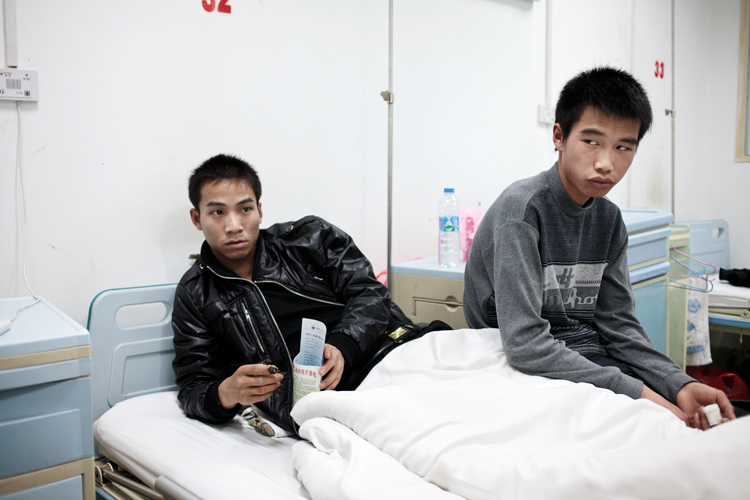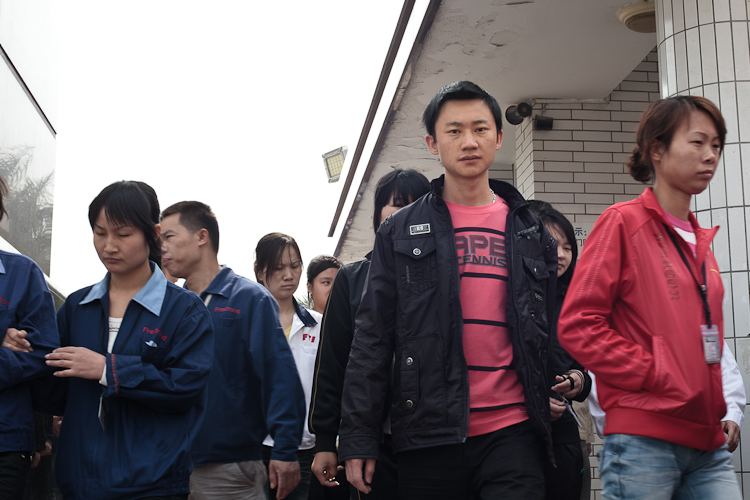
Jeremy Prepscius heads Business for Social Responsibility's Hong Kong office. As a former Asian sourcing head for Nike, Prepscius has watched the evolution of labor relations in China. He sees a lot of progress, but he says there is still much ground to make up.
"We are still operating very much under the old mindset in China, which is once an accident happens, we will figure out how to deal with it, as opposed to lets avoid the accident before it happens," Prepscius told me.
If that mindset still exists for registered factories, it's easy to imagine how challenging it is to enforce these standards (or any standards) in "black" factories, where there is no corporation to shame, no assets to go after and factory owners possess the mobility to simply pick up the machinery and open up shop nearby.
Often, many legitimate factory owners don't even need to move. They can change the name of the factory and continue as if nothing happened. Sometimes, as one of the migrant workers learned in labor advocate Zhang Zhiru's office, the factory registration is itself bogus. I watched Zhang politely tell a worker, who was clutching a piece of paper with a fake registration, that he didn't have much of a case.
It's also worth considering the nature of the places where the factories are located. They are usually in tight-knit communities of migrants that feel like villages. Zhang told us that local government officials are often friendly with the owners of the black factories and would routinely inform them when higher- level government officials were scheduled to investigate. This allowed the black factories to close down on investigation days.
BSR would like to change this mindset, but it has its limitations. BSR is a membership-based organization – members include Ford, Nike and Wal-Mart – that pushes the idea of corporate social responsibility and ethical supply chains. But this, of course, rests on the idea that there is a brand that can be held accountable.
Prepscius, a veteran of Nike's labor troubles in the early 2000s, learned this first-hand when Nike's brand was tarnished by allegations of child labor. When multinationals talk about ethical supply chains, I wonder how many components of products that are "deep in the supply chain" come from unregistered factories. It's hard to know and likely even harder to fully police those supply chains. The nature of supply chains is that those at the top will apply downward price pressure on all links in the chain.
At a hospital we visited with China Labor Watch, there was one consistent way this downward pressure manifested itself: many workers told us they sustained injuries because safety equipment on machinery was removed or disabled to hasten the speed of production. Liu Wei, 18, told us he was injured because a safety shield on a machine that made rivets for signs had been removed, resulting in an estimated 50-60 percent increase in productivity.
Interestingly, this ruthless efficiency does have an upside. As workers in China and the rest of Asia make technology cheaper, even they can afford entry-level gadgets. And as Prepscius explains, this significantly alters expectations in the future:. "Ten years ago did an average Chinese worker have a cell phone? How did they figure out what factory they were at? How much could they stay in contact with friends and family?" And how much easier does this connectivity make it for these workers to organize and be aware of their rights?




